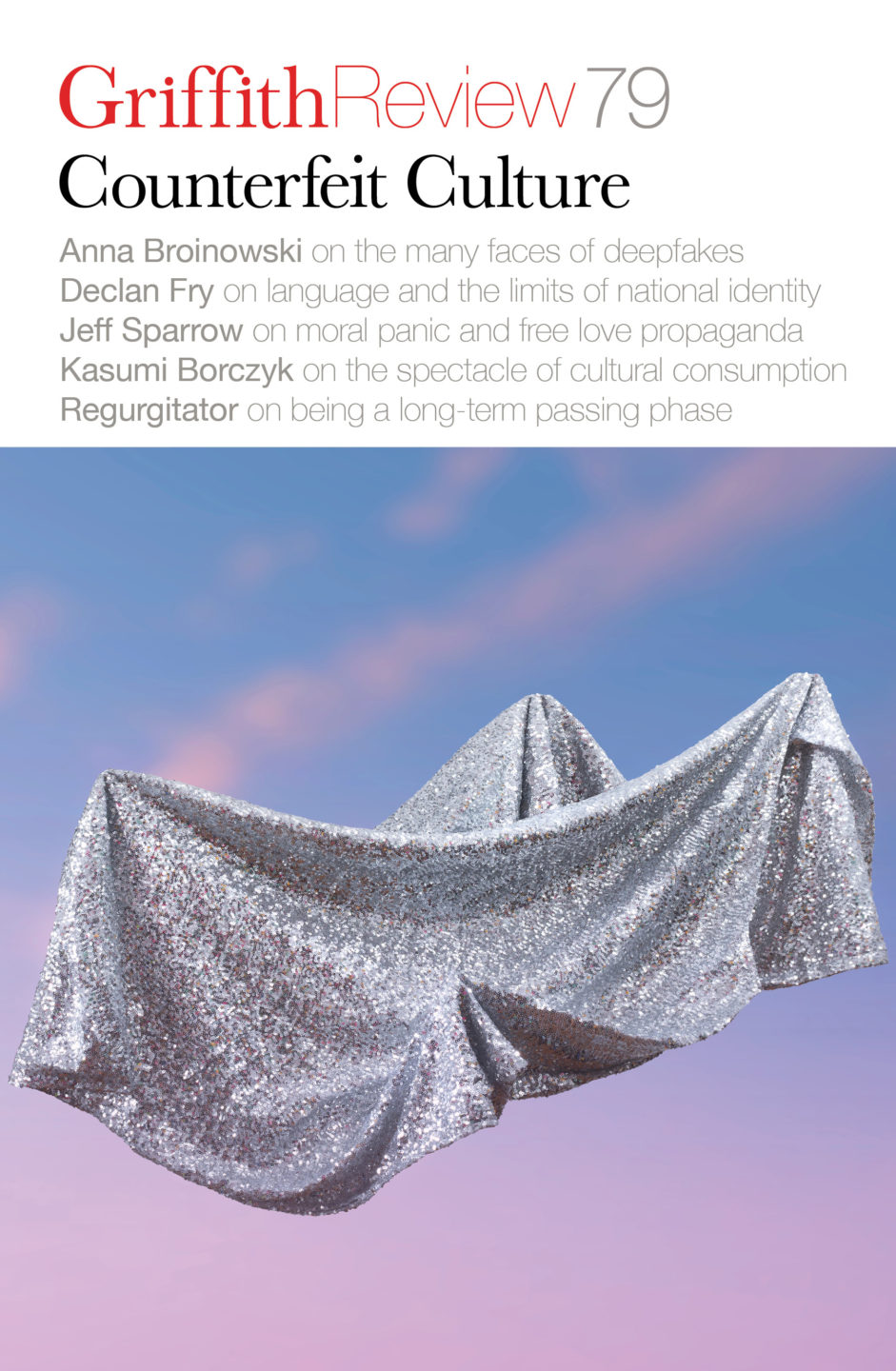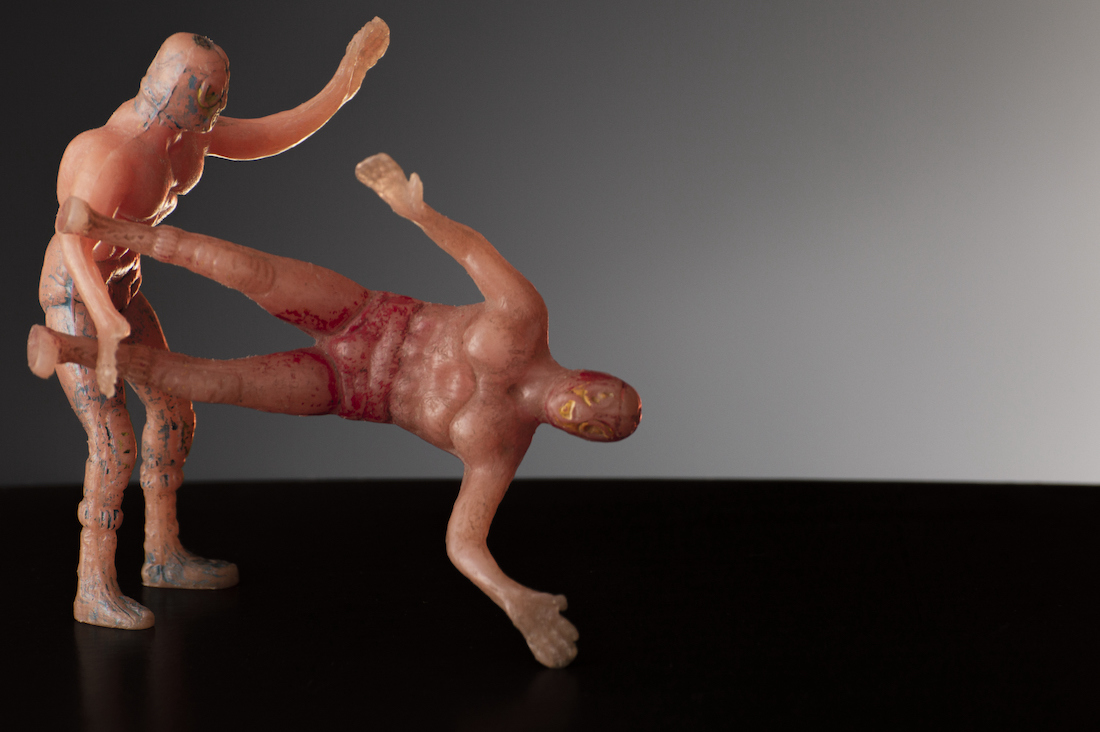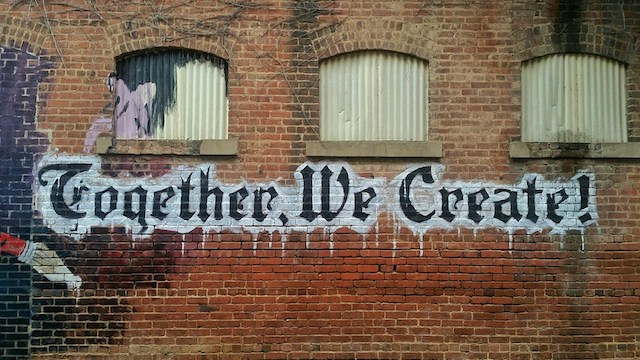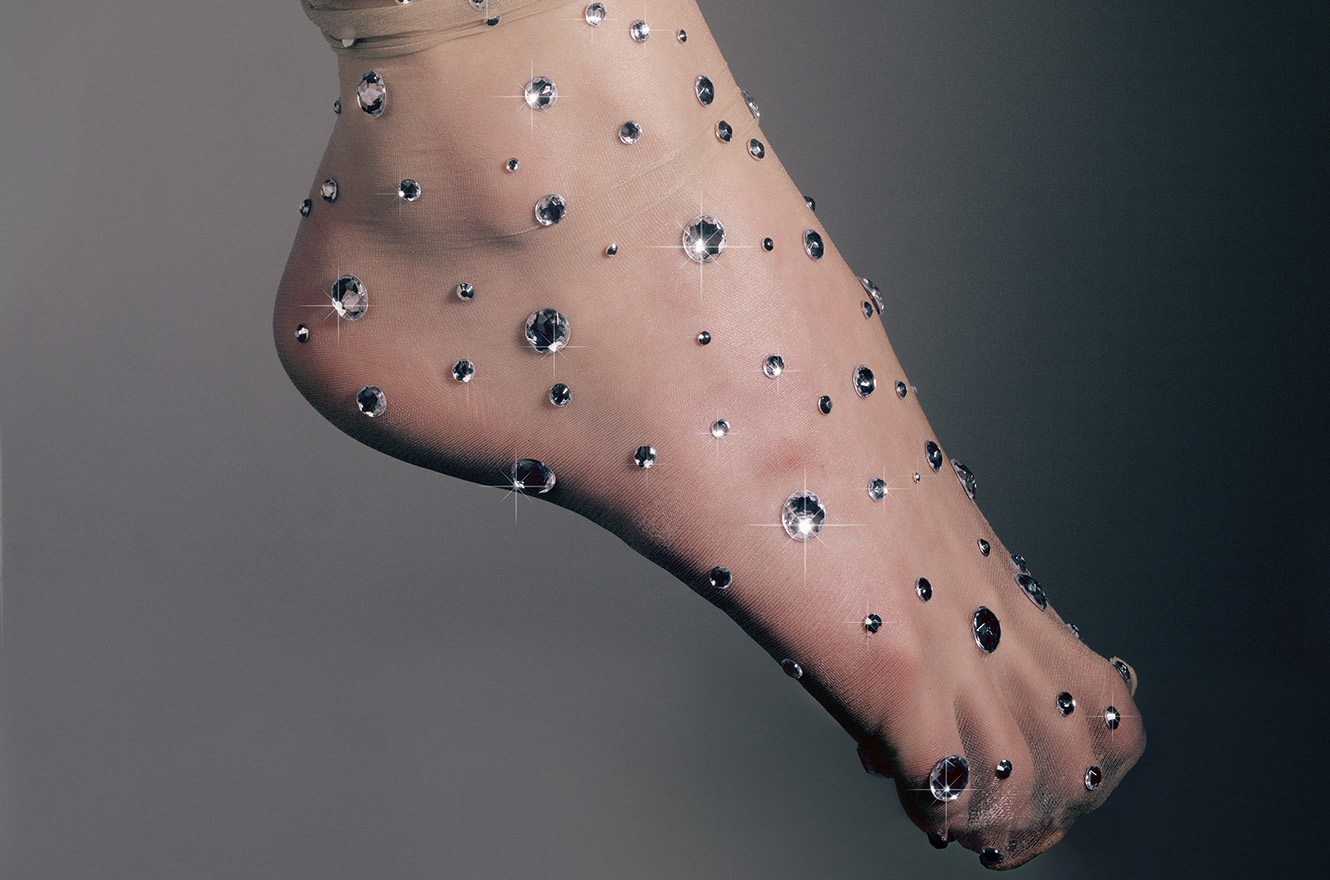Featured in

- Published 20230207
- ISBN: 978-1-922212-80-1
- Extent: 264pp
- Paperback (234 x 153mm), eBook

THE MOST CONSISTENT presence throughout my life has always been professional wrestling. The fake sport that calls itself Sports Entertainment. But I’ve never really understood why wrestling wants to be talked about as if it were sport. Isn’t being a piece of melodramatic physical theatre enough? It was enough to make professional wrestling become my lifelong obsession – what autistic experts would refer to as my ‘special interest’.
In Grade 3, in front of my entire class, I pretended my pencil was a microphone so I could address the room and cut a promo, giving an animated interview in character as ’80s/’90s wrestling superstar ‘Macho Man’ Randy Savage during show ’n’ tell (Oh yeahhh, dig it!). The class was in hysterics as
I spoke in a tough-guy drawl, making my voice as gravelly as I could, curling my mouth so it forced my left eye into a squint, holding my hands up like I was speaking an alien sign language. After that day, other kids would often quote me quoting the Macho Man when I passed them around school (‘I’m the tower of power – too sweet to be sour. I’m funky like a monkey – sky’s the limit and space is the place!’), and I thought to myself: I’m so cool. From that day on, everyone knew me as the wrestling kid.
‘Watch out, that’s the wrestling kid.’
‘I saw him talking to himself yesterday. Probably one of those wrestling speeches.’
‘Don’t talk to Beau unless you want to be talked at about wrestling
for hours.’
I didn’t have any friends, but I was at the peak of school popularity.
On free-dress days, I wore my sister’s dance tights to school because they made me feel like I was a real wrestler. I would’ve worn my Speedos if my mum let me. Other kids stared at me and asked ‘What are you wearing?’ and I’d tell them that this was my wrestling gear. They’d smile and whisper to each other. I was ecstatic that so many people were talking about me because this meant I was an interesting person.
At lunchtime, I played wrestling alone on the school oval. I threw myself around on the grass, imagining that my invisible opponent was slamming me on the mat. Sometimes kids would watch and comment on what I was doing. My very own fans.
Eventually another kid from the special education unit saw me wrestling on my own and came to join in. One day I bought a fake blood capsule to school and we exploded it over my forehead while playing. When lunchbreak ended, I went to class wearing my crimson mask and everyone erupted in excitement. In wrestling lingo they were marking out – the crowd was going wild for me.
My teacher didn’t mark out. She sent me to the principal’s office. My classmates cheered as I left the room. I was glowing with how over I was with them. They saw me. They talked about me. I felt wanted.
HERE WE SEE an autistic child in his natural untamed state. Note how he misreads others’ perceptions of him due to his single-mindedness. He is wrapped up in the world of professional wrestling and believes that everyone has the same interest as him. He can’t comprehend that they don’t. The taunts and the teasing are read as compliments rather than acts of aggression towards his differences.
Wrestling is the child’s world. It is how you get through to him. It is his language. A bridge to his mind. And professional wrestling has a secret world all of its own: kayfabe. It’s an illusionary world like kayfabe that the child must enter if he ever hopes to truly fit in.
Kayfabe is the mask wrestling wears that allows its participants and spectators to accept it as a real sport rather than as a television show about a sport. It’s the code word that’s been used for decades so that wrestlers can let other wrestlers know if they’ve been hurt in kayfabe rather than genuinely injured. It’s how they relay to one another what’s real and what isn’t.
Wrestlers are like magicians – everything they do forms part of the act that integrates them into kayfabe.
The child must build his own mask to achieve the similar illusion of acceptance that kayfabe conjures. It will be a realm he can step inside to maintain his own illusion – the illusion of fitting in.
As the child grows older, we can see him slowly become aware that he isn’t well liked by the other kids in his pack. It dawns on him that his all-consuming love of professional wrestling makes others look down on him and exclude him.
The child realises that if he ever wants to fit in, he must conceal this part of himself. And so, he finally creates a mask to hide his true self. But since wrestling is the tool he uses to understand and relate to the world, he becomes withdrawn and quiet. A background character in his own life. A nameless spectator during other people’s wrestling matches. After all, kayfabe is an illusion that everyone is in on, spectators and performers alike – but the child’s illusion is one that he must carry all on his own.
IN GRADE 10, I hated my life. I would go to school and disappear into nothingness. During class I would fall into a daydream where I hit a reverse 450 splash on my opponent to win a shot at the world championship – then I would fail my exam. Lunchbreaks were spent finding places to hide from others so I could write short stories about wrestling. Mostly other kids ignored me. They all felt alien to me, and yet somehow I knew that I was the real alien. I was the one character that my grade wouldn’t accept into their kayfabe.
There was only one kid in my grade who ever talked to me – a boy named Tommy who would call me Silent Beau because I never spoke. After a year of this, I was informed by one of my cousins that this nickname was a reference to a fictional duo of stoners called Jay and Silent Bob. I was not a stoner and, to be totally honest, I didn’t understand what a stoner was – I thought it had something to do with stones.
One day, a new girl started at our school and tried speaking to me.
‘I like your hair. It reminds me of Jeff Hardy.’
I should’ve been thrilled – I had modelled my hairstyle on Jeff Hardy, a pro wrestler, and the fact that she recognised this meant two things: my hairstyle was doing its job, and here was someone else who liked wrestling. But her comment caught me off guard, and my agitated reaction to someone other than Tommy talking to me probably caught her off guard, too. As her words slowly settled into my brain, excitement rose through me, but before I could respond…
‘Oh, don’t mind Silent Beau,’ Tommy said. ‘He doesn’t speak to anyone. Come hang with us.’
She didn’t even think twice about it. My annoyance must’ve been obvious because when Tommy looked at me, his expression was disgusted.
‘The fuck are you looking at, freak?
I’m not a violent person, but something in me broke when he said those words. I grabbed a nearby steel trash can – one of the things I was usually afraid to touch because of all the germs and the feeling of the dirty steel, which made my skin shriek – and then I tossed it at Tommy’s head like I was Donkey Kong and he was a plumber harassing me for having a conversation with a princess.
All of his friends got between us, a couple holding Tommy back and a couple swearing at me. There were so many sounds, my ears couldn’t keep up. I’d thrown the trash can so fast the action hadn’t fully registered in my head, and when it did, my hands felt like I’d soaked them in sewer water, so I puked a little. The kids around me started laughing and I didn’t know what to do. Why was I such a fuck-up?
I ran.
Eventually I changed schools, and one of my new classmates had a friend from my old school who told them that I’d hit a kid with a trash can. This made all the popular kids want to befriend me for being such a ‘rebel’. I thought this could be the start of my push – in pro wrestling, this is when a character ascends through the rankings – but it was nothing like the fantasy I had built. They didn’t like wrestling and I didn’t like any of the things they liked. They made a lot of mean jokes that I didn’t understand. I laughed anyway. And when they spoke about sports or drugs or hooking up or other things that didn’t make sense to me, I nodded along and they never questioned me. Their personalities were laying the foundation for me to fit into my new school’s kayfabe.
WHEN THE AUTISTIC child enters his rebellious teenage years, the desire not to be a target of his pack becomes stronger. He has learnt – albeit slower than most – that not everyone will think the same way he does. He keeps his obsession to himself. Single-minded devotion attracts taunting and taunting makes him feel alone.
Locking the gate on what he loves makes him appear more human. He is assimilating into the kayfabe that he must adhere to for survival.
In the kayfabe of professional wrestling, there are three categories of wrestlers:
Babyfaces: the heroes, the good guys. They do what they need to do to pop the crowd and get people rallying behind them. Everyone loves a good babyface, and they inspire others to reach for greatness.
Heels: the villains. They can be both bad and good because their morality isn’t what makes them a villain – it’s their reaction to how others treat them. If a babyface lashes out, justified or not, it often indicates their transformation into a heel character. This heel turn presents a new chapter in the wrestler’s career and often leads to greater success, even though spectators and other wrestlers alike have now turned against them.
The last category is the rarest, the tweener. Tweeners jump seamlessly between babyface and heel, assuming the role they need to for the story to play out. Tweeners often have a cool, rough demeanour that can be tweaked ever so slightly to manipulate the crowd into either cheering or booing them. Tweeners often find themselves lost in major storylines.
The teen knows that being a babyface should be his goal. Babyfaces are adored by everyone. They’re the happiest and the most successful. Yet, when he watches pro wrestling, he finds himself siding with the heel. Often, they’re not inherently bad characters – they’ve just been pushed too far and are doing what they need to survive.
The teen doesn’t understand how to be adored as a babyface and he lacks the confidence to be a heel. So as he enters a new chapter of life, he becomes a tweener. He wears his babyface mask for as long as he can, but it isn’t a natural fit, so occasionally it slips and the heel mask shows through. Not a cool heel like a wolf, but a dud heel like a bull ant.
IN MY LATE twenties, I started working at a sort-of-popular-but-sort-of-really-not-popular tourist attraction in Melbourne. By now I’d crafted a whole heap of masks to ensure my survival. All of them came with rules:
Take at least five seconds to thoroughly understand what you’re about to say before saying it.
Ask more questions than you give answers. Ever confused or worried about how to answer someone?
Find a way to turn your response into a question. If someone says something and looks at you expecting a response that you aren’t sure how to give, the safest bet is a release of breath followed by a neutral-sounding ‘Awwwh’.
Avoid talking about yourself and your interests – especially if people ask about aspects of your out-of-work social life. Do not engage.
If you stim (an unusual repetitive movement used to mitigate strong emotions) or tic (similar to stimming but less controllable and often vocal), play it off like an allergy and find a way to take a bathroom break so you can work through it out of sight.
No matter my mask, adhering to these rules kept me safe.
Years and years of therapy had helped me figure out how to blend into life’s kayfabe despite not truly understanding the rules of engagement. Personal experience had taught me that when people hear the terms ‘autistic’ or ‘anxious’ or ‘depressed’ or ‘OCD’, they instantly build a character for you, and that character represents a burden. So when people would start to see that I was different, I was very quick to claim that ‘I’m just very eccentric’.
Then I took three months off work to study in some intensive improvisational theatre programs in the US. Theatre had always come naturally to me. Pretending not to be me was my most finely honed skill. But it was during these programs that my masks started to slip.
THE TEEN, NOW a full adult, has trained himself well.
Funny, then, that it is three months of dedication to playing other people that is the cause of his exhaustion. Like a world wrestling champion on the run of his life – setting attendance records, eclipsing merch sales and getting five-star-rated match after five-star-rated match – eventually the hard work takes its toll.
I WAS OUT drinking with some of the people in the theatre program after we finished our final showcase performance. Hanging out with them felt different. Perhaps it was because they felt temporary. When the program was over, I would go back to Australia and never see them again. So if I messed up, it wouldn’t follow me home. I could relax a bit.
They all thought I was so cool. Easy to talk to. Funny. Chill. And I knew this because they told me so. They mentioned it again that night as I got drunk and accidentally let slip about how down and miserable I can get. How heavy the darkness can lean on me. How much I can hate on myself. And rather than judge me, they refused to let me talk shit about myself.
Then I broke.
We did shots.
My masks fell away.
We danced and when they touched me I said, ‘Please don’t’, and they accepted it.
I forgot my rules.
They asked me about the weird thing I was doing with my hand.
I told them that it was the taunt of a wrestling world champion.
Then they asked me about wrestling – something they said they were fascinated by but didn’t understand.
What I had held in for so long burst out. Finally, I began to speak…
The funny thing about adults is that they have a tendency to outgrow their childish ways of being. Honesty. Vulnerability. These qualities, while looked down on by children, are often admired by adults. People that wield them are referred to as brave.
I am not entirely sure who I am. I think that moment in the US constituted a gimmick change. I was going from Ringmaster to Stone Cold, from Cactus Jack to Dude Love, from Razor Ramon to Scott Hall – only my new gimmick was no gimmick. I was just me, whoever that was.
In 1996, four of my favourite pro wrestlers (real-life best friends known by insiders as the Kliq) partook in an infamous moment at Madison Square Garden known as the curtain call. Two of the four wrestlers were on their way out of one company and signing with another, ending their time on the road together. At the end of the show, they stood in an emotional huddle in the centre of the ring and acknowledged their friendship. This was controversial, as two of them were babyfaces and two of them were heels. Bad guys and good guys were not meant to mingle. More than that, they had all just fought each other in the ring and were hated enemies in storylines.
‘Kayfabe is dead!’ The news spread across wrestling newsletters and fan sites. Four of the top guys in the business had acknowledged kayfabe as a fake aspect of their world.
Wrestling changed that night. Kayfabe was no longer an unspoken industry secret, and wrestlers would even begin to allude to it in a way that blended fact with fiction to create deeper story arcs.
IN THAT MOMENT at the bar in the US, I felt so free and unchained. It was a revelation.
My peers accepted me for who I was. They liked me. It didn’t matter if I was a babyface or a heel or a tweener. Kayfabe be damned – they thought my honesty was refreshing and likeable.
After spending so long constructing a character based on what I thought I needed to survive, I felt that it was only in losing those constructions that I could survive the happiest.
When I returned to Melbourne, I strived to remember this new mindset. I dropped my masks more often, living both in and out of kayfabe. Similar to wrestling storylines, life is most interesting when fact and fiction blend together. Showing my vulnerable side continued to have a positive effect on the people around me.
After nearly thirty years of feeling like a fake person, I finally felt alive.
And so I hold my $500 World Wrestling Championship replica belt up to my shoulder, I bring both of my hands to my face and kiss them before letting them rocket out to my sides, and in a deep gravelly voice I say, ‘I’m the tower of power – too sweet to be sour. Oooooooh yeah, DIG IT!’
Image credit: Getty Images
Share article
More from author

A fair game for all
GR OnlineWhen a disabled writing student tells me they won’t submit their work for publication because they fear being rejected for not being enough, I always find myself wishing that the publishing industry had the time and empathy to reply more thoroughly to these marginalised voices.
More from this edition

About face
Non-fictionOur image-centred world has elevated what writer Jia Tolentino calls ‘Instagram face’, a racially ambiguous assemblage of ethnic ‘greatest hits’ – wide cat-like eyes, big lips, smallish nose, high cheekbones. Few people will have a face that fits this template... But, whatever, you can pay for it.

Outside, Mona Lisa
Non-fictionWhere bushwalking is concerned, Tasmanian maps are not an authentic picture of the landscape. They’re fine if you want to stick to well-known trails, but if the track has been assigned a T4 rating it won’t be on the map. Sometimes that’s because the route is so rough it would be misleading to mark it as a track, but sometimes it’s that for a range of management and environmental purposes, the PWS just doesn’t want many walkers going there.

Strike a pose
In ConversationI grew up when women were viewed as decorative, appraised for their sexual currency. It’s hard to disassociate from powerful formative experiences. Particularly my childhood observations of glamour fused with my interest in the macabre.